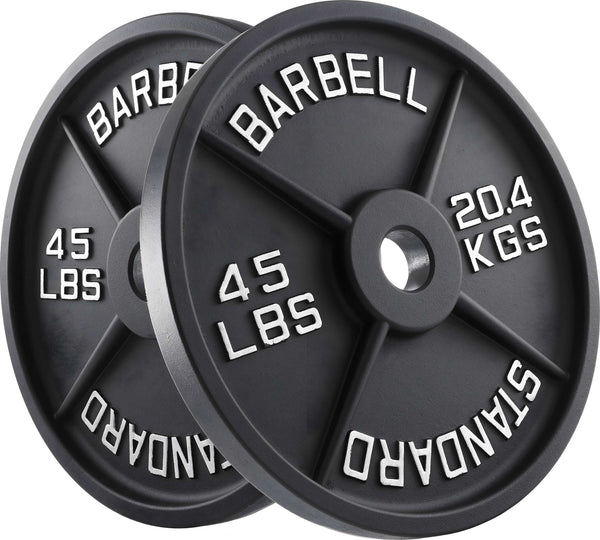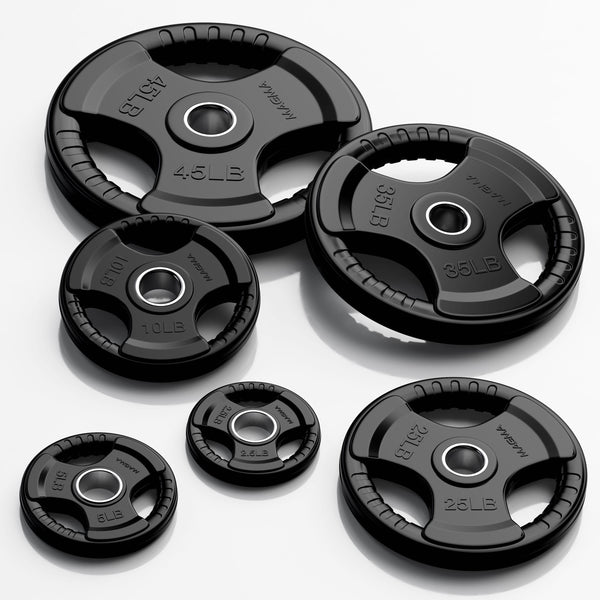Your Cart is Empty
September 13, 2023 4 min read
If you're starting or expanding your home gym, choosing the right weight plates is an important decision. Weight plates come in a variety of sizes, materials, and prices, and selecting the right ones can help you achieve your fitness goals more effectively. In this article, we'll discuss the different factors to consider when choosing weight plates and offer some tips for making the best choice for your needs.
Shop The Collection: Weight PlatesThe first thing to consider when choosing weight plates is the type of plates you want. There are several options available, including:
The material of the weight plates is another important consideration. Cast iron and steel plates are the most common and are generally the most durable. They can withstand heavy use and are less likely to break or wear out over time. However, they can be prone to rust if not properly cared for. Rubber-coated plates are also a good option for durability, as they are less likely to chip or crack and are easier on the floor and equipment. Plastic plates are the least durable option, as they can break or wear out over time, especially if they are dropped or subjected to heavy use.
 Shop The Gear: MAGMA Olympic Cast Iron Weight Plates, from $2.99 USD
Shop The Gear: MAGMA Olympic Cast Iron Weight Plates, from $2.99 USD
 Shop The Gear: MAGMA Virgin Rubber 2-inch Olympic Grip Plates, from $2.99 USD
Shop The Gear: MAGMA Virgin Rubber 2-inch Olympic Grip Plates, from $2.99 USD
When choosing weight plates, it's important to consider the size and weight increments that will best suit your needs. If you're just starting out or are working with a limited budget, it may be more practical to opt for smaller plates in increments of 2.5 or 5 pounds. This will allow you to gradually increase the weight of your lifts without having to invest in a large set of plates all at once. On the other hand, if you're an experienced lifter or are looking to increase your weights quickly, larger plates in increments of 10 or 25 pounds may be more suitable. Fractional plates can also be useful for making small adjustments to your weights as you progress.
Of course, your budget is also an important factor to consider when choosing weight plates. Standard plates and bumper plates are generally the most affordable options, while adjustable and fractional plates can be more expensive. If you're on a tight budget, it may be best to start with a small set of standard or bumper plates and gradually expand your collection over time. You can also look for used weight plates or consider purchasing a smaller set of adjustable or fractional plates to supplement your collection.
When selecting weight plates, it's important to make sure they are compatible with your existing equipment. Standard plates and bumper plates are designed to fit onto barbells and dumbbells with standard-sized holes, so you'll need to make sure the holes on your plates are the same size as those on your barbells or dumbbells. If you have adjustable dumbbells or barbells, you'll need to make sure the plates you choose are compatible with the locking mechanism on your equipment. It's also important to consider the size and fit of the plates when selecting them. You'll want to make sure they are easy to grip and handle, and that they don't take up too much space in your gym.
Choosing the right weight plates can help you achieve your fitness goals more effectively and efficiently. By considering the type, material, size, and weight increments of the plates, as well as your budget and the compatibility with your existing equipment, you can select the best weight plates for your needs. With the right weight plates, you'll be well on your way to reaching your fitness goals and building a stronger, healthier body.